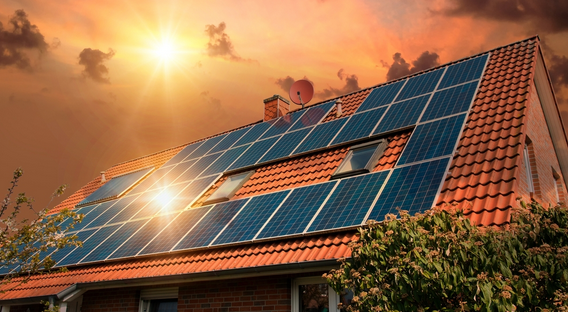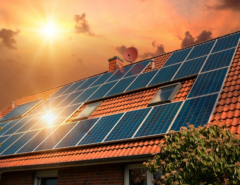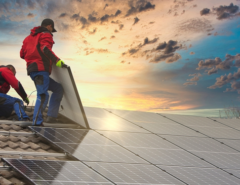As solar power becomes increasingly affordable, solar panels for homes have become extremely popular. It’s easy to install, lasts 25+ years and helps reduce electricity bills – all while reducing CO2 emissions in your area. What’s more – if you generate more power than you use, you can connect your house’s solar system to the grid to sell the excess electricity to the local power company and earn revenue. Here’s a quick guide to getting your own solar PV system.
- First, measure the area available on your rooftop for solar panel installation. You can assume that 100 square feet can accommodate 1 kW of panels.
- Contact a provider like Mahindra Solarize, who will recommend the right solar panel system for your house and install it for you.
- Schedule a site survey with the solar PV provider and finalise the system you need. Make the payment or choose from a financing plan.
- Sit back and relax! Technicians will arrive in a few days and install the panels as well as any additional components like net metering, inverters and batteries.
- Note that regardless of whether you’re installing solar panels for the home, office or factory, this process remains the same.
Let’s also look at the additional components of your solar system house, which are crucial to ensure smooth operations:
- Inverters: These help to convert the DC power generated by the panels into AC power, which can be used at home to power appliances.
- Batteries: Since solar PV cells only generate power during the daytime, you can store extra power for use at night in batteries. These are an optional component.
- Net-metering: This is vital when your house’s solar panel system is connected to the grid. The net meter records the units you have consumed from the grid, subtracts the units you have added to it, and ensures you get billed for the difference only. If you have added more than you have consumed, the power company must pay you for the difference!
- Software: Most solar PV providers also let you control your house solar system via smartphone apps. This software monitors your panel’s daily power output, temperature, usage, and other parameters to optimise the system and alert the user of any problems.
Solar panels for homes have a lot more potential than you might think. If you have a 500-square-foot roof, you can install 5kW of panels! Practically speaking, you can generate around 5,500 to 8,000 units of electricity per year. This figure varies slightly depending on your location in India as well as the number of rainy days per year in your region.
There are a few upcoming trends in small-scale solar which have not yet caught on in India but are fairly popular in Europe and North America. These are thin-film solar for windows and solar roofing tiles.
In crowded cities, it can be difficult to find roof space for installing solar panels for offices. The little roof area that exists is covered in plumbing, vents or AC compressors. So these office buildings are installing thin-film solar on their windows. This innovative technology lets in enough sunlight for people to work but also absorbs around 10% of the light energy and converts it into electricity to power appliances within the office.
Solar roofing tiles have caught on in new home constructions. Tesla is leading the way – they have installed 4 GW of PV roof tiles across 480,000 roofs already. These tiles help homeowners save on the cost of having both a roof and a solar PV setup by combining them into one product. A single tile, about 15 inches wide and 45 inches long, generates 72 watts of peak power.
There has never been a better time than now to get solar panels for the home. They have become efficient and economical, and have immense long-term benefits – both financial and environmental. They cut down your power bills, give you independence from the grid, provide a source of extra revenue and are a great way to reduce humanity’s reliance on fossil fuels.




